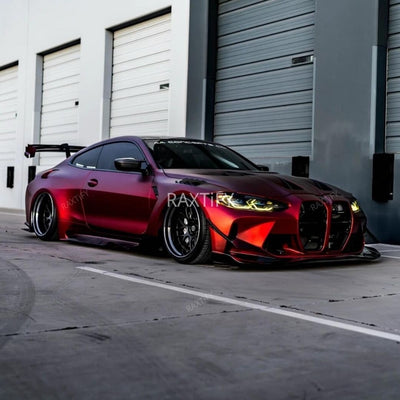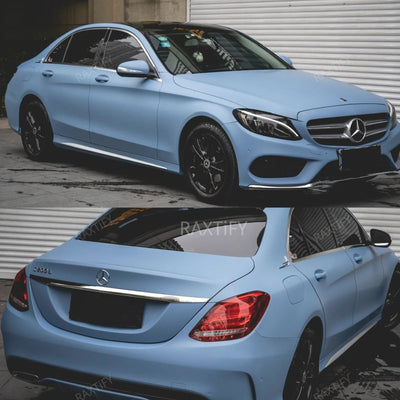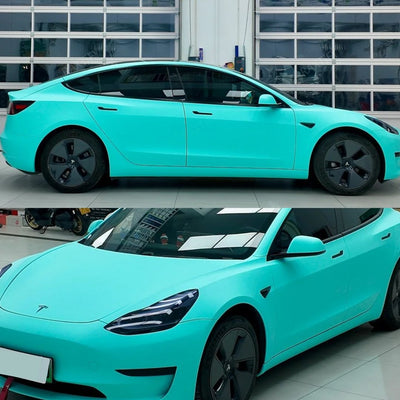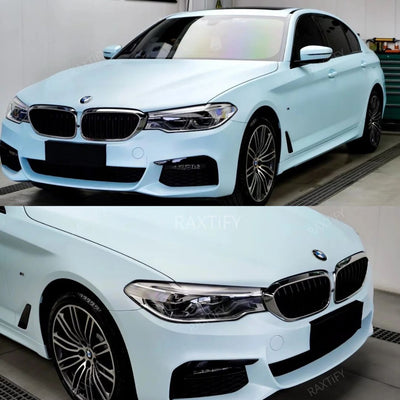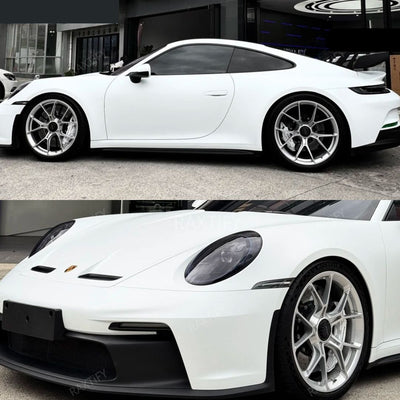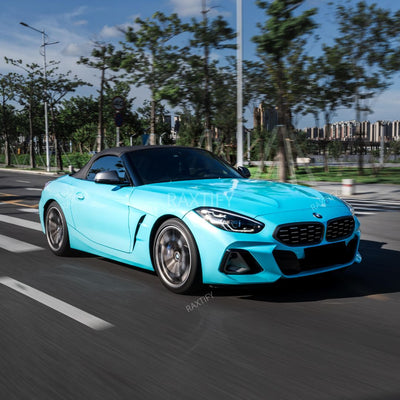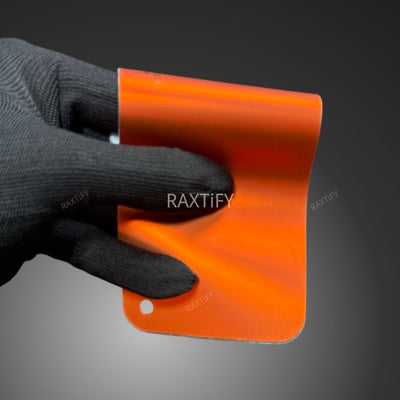Introduction
Vinyl wrapping has been known to be one of the most widespread means of altering the look of your car- without spending a permanent paint job or spending thousands of your money in a body shop. However, new car customization and wrapping has a whole new world, you may be asking yourself: How difficult is it to vinyl wrap a car yourself?
The short answer? It is certainly possible- only you need to be patient, have the correct tools and a little technique. This is a novice-friendly tutorial that will take you through all you need to know before you attempt a DIY car wrap which includes:
- What is so hard about wrapping (and how to prevent a few pitfalls)?
- Breakdown of the wrapping in steps.
- Pro tips on how to make your first wrap job a success.
- It pays to do some jobs on your own--when and when not to get a professional.
At the end, you will have a clear understanding of what it is like to wrap your own automobile and whether or not it is the right project to undertake.
What Influences the Difficulty of DIY Vinyl Wrapping?
Not all car wraps are created equal—and neither are all wrap jobs. Several factors affect how challenging it will be to apply a vinyl wrap yourself, especially if it’s your first time. Let’s break them down one by one.
Your Experience and Hand Skills
If you’ve never installed a wrap before, expect a learning curve. Wrapping a car requires patience, precision, and steady hands, especially when working on curved surfaces or tight corners. Beginners often struggle with issues like air bubbles, overstretching the vinyl, or misaligned seams—but the good news is that skills improve quickly with practice.
Tips: Start with flat panels like the hood or roof before attempting bumpers or mirrors.
Tools, Workspace, and Conditions
Using the right tools makes a massive difference. At minimum, you’ll need:
- A quality squeegee
- A sharp utility knife
- A heat gun or torch
- Wrap magnets or gloves
Having a clean, indoor, well-lit workspace is also crucial. Dust, wind, or direct sunlight can interfere with application, causing premature adhesion or contamination under the film.
Car Body Complexity (Curves, Edges, Trim)
Some vehicles are simply harder to wrap than others. Cars with:
- Deep body lines
- Flared fenders
- Complex bumpers
- Badges, trim, or roof racks
…will take more time and skill to cover cleanly. If your vehicle has a lot of contours or aggressive design features, be prepared to spend extra hours carefully stretching and positioning the vinyl.
Material Quality (Vinyl Type, Stretchability)
Not all vinyl is equally easy to work with. Premium cast vinyl films—like those used in RAXTiFY’s wraps—are more flexible, durable, and forgiving than cheaper alternatives.
Look for films with:
- Air-release technology (to prevent bubbles)
- Good stretchability without distortion
- Repositionable adhesive for second chances
If you're using a low-grade film, even a simple wrap job can feel ten times harder.
Surface Prep and Cleanliness
This is one of the most overlooked steps. Your car’s surface must be:
- 100% clean (no dirt, wax, or oil)
- Smooth and dry
- Free of rust, paint chips, or imperfections
Poor prep can lead to vinyl not sticking properly, especially on edges and curves. Use isopropyl alcohol and clay bars to deep-clean before starting.
Temperature & Environmental Factors
Temperature can make or break your wrap. Vinyl becomes stiff in cold conditions and too stretchy in heat, both of which can lead to application errors.
Ideal working temperatures are between 65–75°F (18–24°C). Avoid wrapping in:
- Direct sunlight
- High humidity
- Outdoor environments with dust or wind
If you're in a hot or cold climate, make sure to control the workspace temperature for the best results.
How to Vinyl Wrap a car as an amateur.
It might seem that wrapping a car by your own is a daunting task, however, it becomes a lot simpler when you do it step-by-step. The following is a basic step by step guide all beginners can use:
Step 1 - Cleaning the Surface of your Car.
Begin with a clean smooth base. Clean your car to get rid of dirt and dust or wax. Any residue that is left over can create bubbles or make the vinyl not adhere well to the surface. Wipe the surface with an alcohol cleaner in a final wipe-down, and have the surface thoroughly dry before proceeding to the next step.
Step 2 -Vinyl Measuring and Cutting.
Measure your car in parts and cut some vinyl sheet that is a little bigger than the part you want covered. The additional inches provide you with space to fiddle with and minimise the possibility of falling short. New users will also be more comfortable building without having to deal with the complete car at first; they can start with a smaller part such as the hood or mirrors.
Step 3 -Applying and Stretching the Film.
Unpeel the backing of the vinyl and place it in place. Clean it with a squeegee pushing it toward curves and edges. Turn the work slowly to prevent trapping air bubbles. In your first project, gloss and satin wraps are strongly suggested, these are easier to reposition, more forgiving and less likely to reveal small mistakes as compared to chrome and textured finishes.
Step 4 Edges Trimming and Finishing.
When the vinyl is flat, cut the excess away using a sharp utility knife. Take a good tuck around door handles, mirrors and trim to create a smooth appearance. It is all in patience here between a professional-looking wrap and a sloppy one.
Step 5 -Post-Installation Maintenance (Heating, Smoothing, Curing)
The last step is heating of the vinyl with a heat gun. This makes the film adhere to curves and enables its adhesive to perform in the long-term. Once more smooth down the edges and allow the wrap to dry at least 24 hours before washing or exposing it to harsh weather conditions.
Pro Tip: You should always start small when it is your first time wrapping. Mirror tops, or spoilers, then you can attempt a full car. And in case you would prefer a less difficult learning curve, look at beginner-friendly materials like RAXTiFY Gloss Vinyl Wraps and Satin Series, with their balance of flexibility, longevity, and assembly.
Common Beginner Mistakes to Avoid
Car wrapping is an easy task to perform on the first attempt, but it is easy to make several pitfalls which might make the final appearance of the car look bad or cut the life of the wrap. These are some of the errors that you should avoid at any cost in order to save time and money:
1. Skipping Proper Surface Cleaning
Most novices hurry the cleaning process. Even small dust particles, residue of wax or grease may lead to bubbles and lack of adhesion. It is always good to thoroughly clean and wipe with an alcohol pad before laying down the film.
2. Overstretching the Vinyl
When adhering to curves, the urge to overstretch the vinyl is tempting, yet it is because of curves that thin the tape resulting in a weakened colour and longevity. Instead gently apply even heat so that the vinyl becomes more flexible.
3. Trapping Air Bubbles
One of the beginner issues is the air pockets. They do not only appear unprofessional, but may also cause peeling. Apply sparsely with a squeegee in the middle and move outwards forcing air out.
4. Cutting Too Aggressively
Excessive pressure on the knife will scratch your paint. A sharp blade should always be used and angled a little out of the surface. In the case of a beginner, edge-sealing tape or knifeless tape may be used in order to minimize risks.
5. Ignoring Temperature and Environment
Working in a dusty garage or on a cold day to install vinyl wrap can be a lot more difficult. Preferably, one should work indoors at approximately 70 o C (21 o C) and with little dust as well as wind.
6. Choosing the Wrong Film Type
Glossy chrome or texture films can be amazing, however they are not easy to beginners. Begin with gloss or satin wraps, which are less strict and can be repositioned more easily when installing.
Pro Tip: A majority of novices fail not due to lack of ability, but to the fact that they do not assess the preparation and surroundings. Take your time during the cleaning and set up process- this is what he makes wrapping so much easier.
Common Challenges When Wrapping a Car
Vinyl wrapping has its own obstacles, even when one has the right tools and techniques. Being aware of what to expect will enable you to plan in advance and not to be frustrated:
1. Complicated Shapes and Curves
Several modern cars have sharp angles, deep grooves and complex curves. Bumpers, mirrors and door handles are particularly difficult to wrap around, and more heating and stretching is needed to accomplish a smooth section.
2. Large Surface Areas
Making large panels such as hoods, roofs or doors requires accuracy. Dealing with huge pieces of vinyl without a wrinkle or a crease can be intimidating to a beginner. The second set of hands come in handy most of the time.
3. Working Around Trim and Edges
Badges, rubber seals or chrome trim areas are challenging. You will have to tuck the vinyl under these seams or cut out the trim completely to have a smooth appearance.
4. Environmental Factors
Your results can be affected by temperature, humidity and dust. Cold, the vinyl gets stiff by too hot it gets overstretched. The film can trap even small dust particles trapped in the air.
5. Consistency Across the Vehicle
It is not as easy as it appears to maintain a consistent finish all over the car. The alignment of colors, tension of stretch and edge sealing should be constant so as to produce a professional wrap.
Pro Tip: It is best to begin with more simple sections (such as the hood or a roof) before taking on more complicated ones. When you are new, you would have to practice first with smaller pieces or accessories. The learning curve can also be lessened by using beginner friendly types of vinyl (like gloss or satin films).
DIY or Professional Wrap: Which Is Right for You?
If you’re considering a vinyl wrap, one of the biggest decisions is whether to do it yourself or hire a professional installer. Both options have clear advantages and disadvantages depending on your budget, skill level, and expectations.
DIY Vinyl Wrapping
Pros:
- Lower cost: Save thousands by only paying for the vinyl and basic tools.
- Flexibility: Work at your own pace, redo sections if needed.
- Learning experience: Great for car enthusiasts who enjoy hands-on projects.
- Customization freedom: You control the process and can experiment with colors or partial wraps.
Cons:
- Steep learning curve: Mistakes like bubbles, wrinkles, or uneven edges are common.
- Time-consuming: A full-car DIY wrap can take 1–3 days (or longer for beginners).
- Finish quality: May not look as seamless or durable as a professional job.
- Limited warranty: DIY wraps typically don’t include installation guarantees.
Professional Vinyl Wrapping
Pros:
- Flawless finish: Experienced installers handle curves, edges, and trims with precision.
- Time-saving: Most shops can finish a full wrap in 1–2 days.
- Durability: Professional heat setting and edge sealing improve longevity.
- Warranty included: Many installers offer guarantees against peeling or bubbling.
Cons:
- Higher cost: Expect to pay $2,500–$6,000+ for a full wrap in the U.S.
- Less control: You’ll need to trust the installer’s process.
- Scheduling required: May take weeks to book an appointment with reputable shops.
📌 Bottom Line:
Choose DIY: if you’re budget-conscious, patient, and want to learn the process (great for smaller projects like roofs, hoods, or spoilers).
Choose Professional: if you want a perfect finish, long-term durability, and zero hassle.
Pro Tip: If it’s your first time, try wrapping smaller sections with beginner-friendly gloss or satin wraps before committing to a full DIY project.
Conclusion
Although the idea of wrapping up your car by yourself might seem daunting in the beginning, it is not impossible with the right preparation in the hands of beginners. Although problems such as complicated curves, trimming and bubble control take time, most problems can be solved with the right tools, a clean work space and the appropriate type of film.
Wrapping by yourself is cheap and also an enjoyable means of personalizing your car as well. Keep it simple, start slowly, and select easy to work with beginner-friendly finishes such as gloss or satin finishes. Practice will make you feel confident and produce an appearance that is professional.
Ready to give it a try? Shop entry-level vinyl wraps at RAXTiFY including speedy delivery in the United States.









